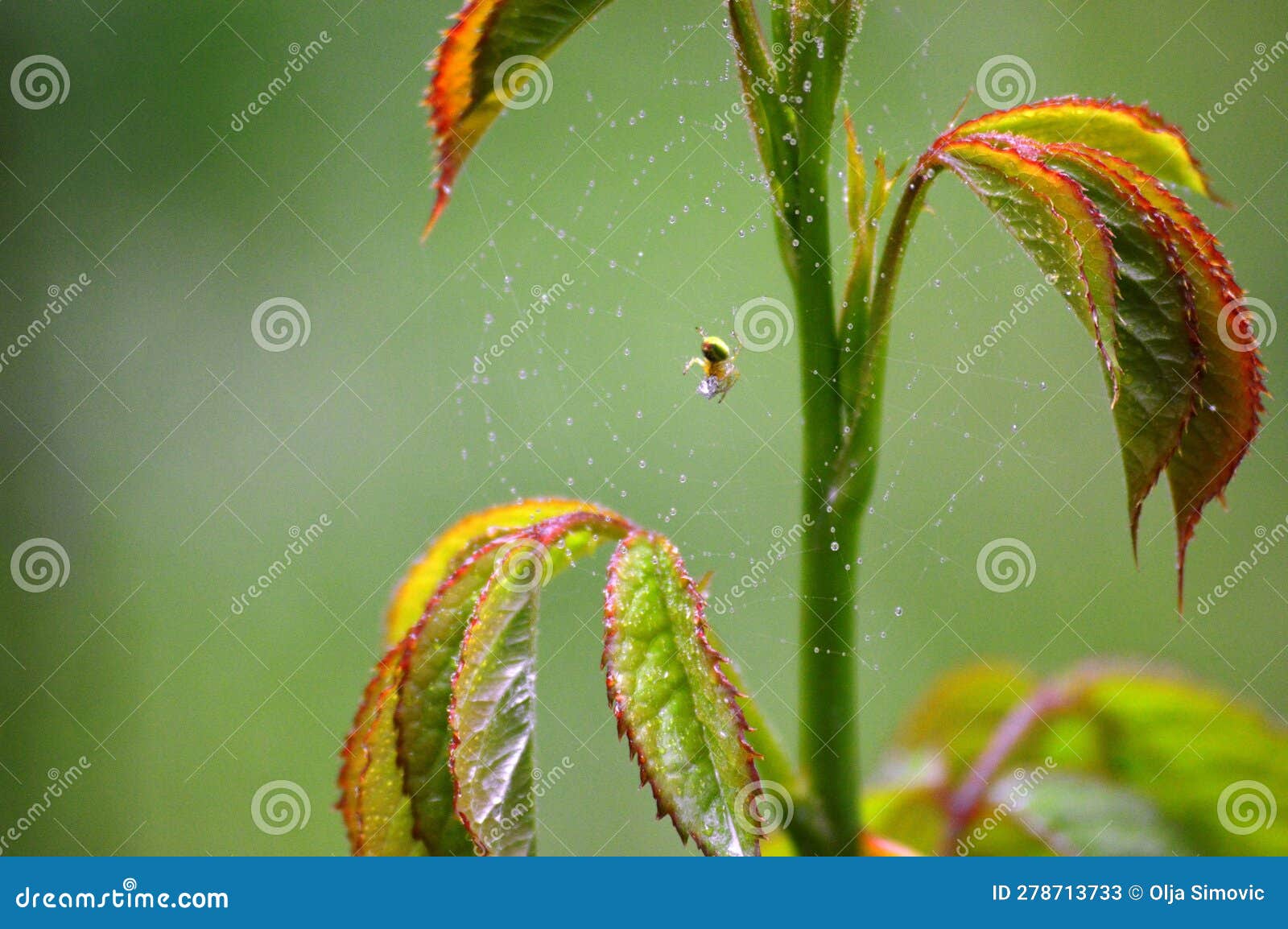Sophia Rain Spider: Unveiling The Mysterious World Of This Extraordinary Creature
Let me tell you something fascinating about the Sophia Rain Spider. Now, if you’re anything like me, the moment you hear about a spider, your curiosity kicks in—or maybe it’s the shivers running down your spine. But hold up, because this isn’t just any spider. The Sophia Rain Spider, also known as the huntsman spider, is a marvel of nature that deserves a closer look. So, let’s dive in and uncover what makes this creature so extraordinary.
Picture this: you’re exploring the wild, and suddenly you spot a spider that looks like it stepped straight out of a sci-fi movie. That’s the Sophia Rain Spider for you. With its massive size and incredible speed, it’s not your average eight-legged friend. But don’t freak out just yet—this spider is more friend than foe. Let’s talk about why it’s so important to understand these creatures and their role in our ecosystem.
Now, before we get too deep into the details, let’s address the elephant in the room: spiders are often misunderstood. They’re not out to get you, and the Sophia Rain Spider is no exception. In fact, they’re crucial to maintaining balance in nature. So, whether you’re a hardcore arachnophobe or an avid spider enthusiast, this article is for you. We’ll break down everything you need to know about this amazing creature, one step at a time.
- Molly Buffington The Rising Star Whos Making Waves In The Entertainment World
- Jameliz Of Leak Unveiling The Story Behind The Viral Sensation
What Exactly is the Sophia Rain Spider?
If you’ve ever wondered about the world of spiders, the Sophia Rain Spider is a great place to start. This spider, scientifically known as Heteropoda venatoria, is part of the huntsman spider family. They’re often mistaken for tarantulas due to their size, but they’re actually quite different. These spiders are known for their speed, agility, and unique hunting techniques. Let’s take a closer look at what makes them stand out.
Key Features of the Sophia Rain Spider
- Size: The Sophia Rain Spider can grow up to 3 inches in leg span, making it one of the largest spiders in the world.
- Speed: These spiders can move at lightning-fast speeds, reaching up to 3 feet per second. That’s faster than most people can react!
- Color: Their bodies are usually a mix of brown and beige, with dark markings on their legs, which help them blend into their environment.
- Behavior: Unlike web-spinning spiders, the Sophia Rain Spider is a hunter. It relies on its speed and strength to catch prey.
So, what does all this mean? Well, it means the Sophia Rain Spider is not your typical garden spider. It’s a fascinating creature that has adapted perfectly to its environment, and we’ll explore more of that in the next section.
The Habitat of Sophia Rain Spiders
Where do these amazing spiders call home? The Sophia Rain Spider is native to tropical regions, particularly in Southeast Asia, Australia, and parts of Africa. However, they’ve also been spotted in other parts of the world, including the United States, where they’ve made themselves comfortable in warm, humid environments.
- Camille Monfort Wiki Your Ultimate Guide To Her Life Career And Achievements
- Pixar Moms The Heartwarming Stories Behind Pixars Mom Characters
Why Do They Thrive in These Regions?
- Climate: The warm and humid climate of tropical regions provides the perfect conditions for these spiders to thrive.
- Food Supply: With an abundance of insects and small prey, the Sophia Rain Spider has no trouble finding food.
- Shelter: These spiders prefer to live in dark, hidden places, such as under rocks, in tree bark, or even inside homes.
It’s worth noting that while these spiders are often found outdoors, they’re not shy about coming indoors when the weather gets too hot or dry. So, if you spot one in your home, don’t panic—it’s probably just looking for a cooler spot to hang out.
The Role of Sophia Rain Spiders in the Ecosystem
Now, let’s talk about why the Sophia Rain Spider is so important to the environment. These spiders play a crucial role in maintaining the balance of ecosystems by controlling insect populations. Without them, we’d be overrun with pests like mosquitoes, flies, and other annoying bugs.
How Do They Contribute?
- Pest Control: By hunting down insects, the Sophia Rain Spider helps keep pest populations in check, reducing the need for chemical pesticides.
- Food Source: These spiders also serve as a food source for larger animals, such as birds and reptiles, contributing to the food chain.
- Biodiversity: The presence of Sophia Rain Spiders indicates a healthy and diverse ecosystem, as they require specific conditions to survive.
So, the next time you see one of these spiders, remember that it’s doing its part to keep the world a little cleaner and healthier for all of us.
Common Myths About Sophia Rain Spiders
Let’s face it—spiders get a bad rap. There are plenty of myths and misconceptions surrounding the Sophia Rain Spider, and it’s time to set the record straight. Here are a few common myths and the truth behind them:
Myth #1: They’re Dangerous to Humans
While the Sophia Rain Spider may look intimidating, they’re not as dangerous as you might think. Sure, they can bite if provoked, but their venom is not lethal to humans. In fact, most bites result in mild discomfort, similar to a bee sting.
Myth #2: They Build Webs
Contrary to popular belief, the Sophia Rain Spider doesn’t build webs. Instead, it relies on its incredible speed and stealth to catch prey. This makes them even more fascinating to watch in action.
Myth #3: They’re Aggressive
These spiders are often labeled as aggressive, but the truth is, they’re more likely to run away from humans than attack. Like most creatures, they’d rather avoid confrontation unless they feel threatened.
How to Safely Interact with Sophia Rain Spiders
If you’re lucky enough to encounter a Sophia Rain Spider, here’s how you can interact with them safely:
Tips for Coexistence
- Keep Your Distance: The best way to interact with these spiders is to give them space. They’ll usually avoid you if you don’t bother them.
- Use Gloves: If you need to move a spider, wear gloves to protect yourself from any accidental bites.
- Provide Shelter: If you want to encourage these spiders to stay around, provide them with safe hiding spots, like piles of rocks or logs.
Remember, these spiders are more scared of you than you are of them. By respecting their space, you can coexist peacefully with these fascinating creatures.
Interesting Facts About Sophia Rain Spiders
Here are some fun facts about the Sophia Rain Spider that might surprise you:
- They Can Run Upside Down: Thanks to their sticky feet, these spiders can run across ceilings and walls with ease.
- They Have Excellent Eyesight: With eight eyes, the Sophia Rain Spider has incredible vision, allowing them to spot prey from a distance.
- They’re Social Creatures: Unlike many spiders, the Sophia Rain Spider can sometimes be found living in small groups, especially during mating season.
Isn’t it amazing how much there is to learn about these incredible creatures? Let’s keep exploring!
The Life Cycle of Sophia Rain Spiders
Let’s talk about the life cycle of the Sophia Rain Spider. From egg to adult, these spiders go through a fascinating transformation. Here’s a breakdown of their life cycle:
Egg Stage
Female Sophia Rain Spiders lay their eggs in a silken sac, which they guard fiercely. The eggs can take anywhere from 2 to 4 weeks to hatch, depending on the temperature and humidity.
Spiderling Stage
Once the eggs hatch, the spiderlings emerge and start their journey. They’re tiny versions of their parents and will molt several times before reaching adulthood.
Adult Stage
After a few months, the spiderlings will mature into adults. At this stage, they’re ready to start hunting and reproducing, continuing the cycle.
Understanding the life cycle of these spiders helps us appreciate their role in the ecosystem even more.
Conservation Efforts for Sophia Rain Spiders
While the Sophia Rain Spider isn’t currently endangered, it’s important to protect their habitats and ensure their survival. Here are some conservation efforts you can support:
Protecting Their Habitats
- Preserve Natural Areas: By protecting forests and other natural habitats, we can ensure that these spiders have a place to thrive.
- Reduce Pollution: Limiting pollution and chemical use helps maintain healthy ecosystems for all creatures, including spiders.
- Educate Others: Spreading awareness about the importance of spiders can help reduce fear and promote conservation efforts.
By taking these steps, we can help ensure that the Sophia Rain Spider continues to play its vital role in the environment.
Conclusion: Why the Sophia Rain Spider Matters
In conclusion, the Sophia Rain Spider is an incredible creature that deserves our respect and admiration. From their unique hunting techniques to their role in maintaining ecosystem balance, these spiders are truly remarkable. So, the next time you encounter one, take a moment to appreciate its beauty and importance.
Now, it’s your turn. Leave a comment below and let me know what you think about the Sophia Rain Spider. Did you learn something new? Do you have any questions? Share this article with your friends and family to spread the word about these amazing creatures. Together, we can make a difference in protecting the world’s wildlife, one spider at a time.
Table of Contents
- What Exactly is the Sophia Rain Spider?
- The Habitat of Sophia Rain Spiders
- The Role of Sophia Rain Spiders in the Ecosystem
- Common Myths About Sophia Rain Spiders
- How to Safely Interact with Sophia Rain Spiders
- Interesting Facts About Sophia Rain Spiders
- The Life Cycle of Sophia Rain Spiders
- Conservation Efforts for Sophia Rain Spiders
- Lori Farmer The Untold Story Of A Remarkable Woman Shaping The World
- Brooke Monk Nude The Truth Behind The Clickbait Sensation

Sophia Rain Spiderman Video

Spider on a Spider S Web in the Rain Stock Image Image of leaf, frost

Rain Spider Over 767 RoyaltyFree Licensable Stock Illustrations